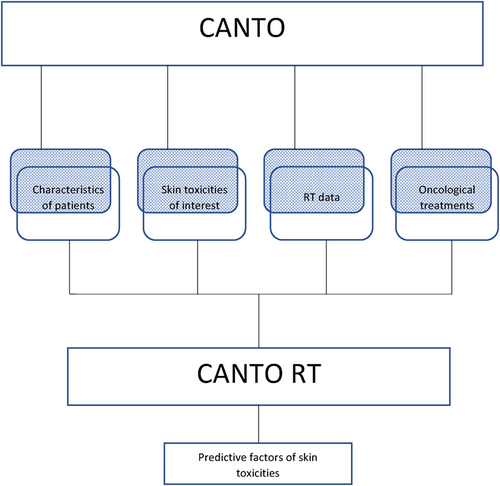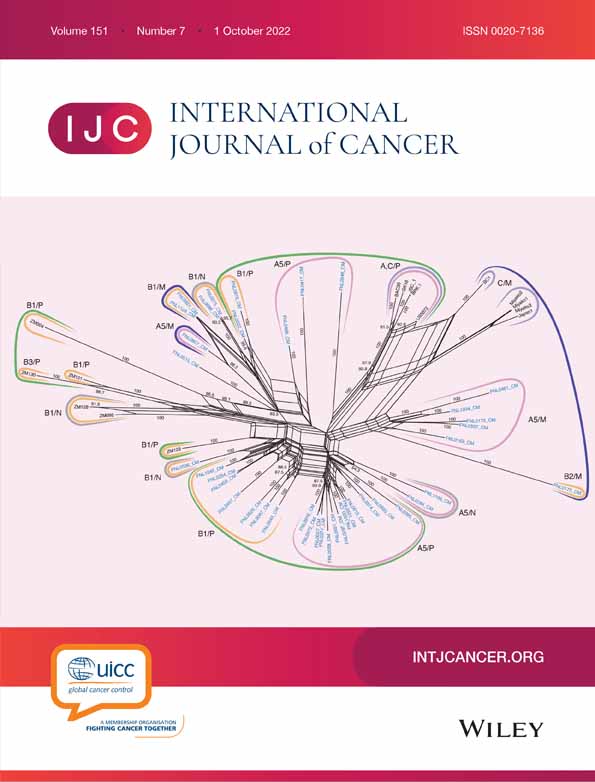CANTO-RT: Skin toxicities evaluation of a multicentre large prospective cohort of irradiated patients for early-stage breast cancer
Funding information: The CANTO study is supported by the French government under the Investment for the Future Program, which is managed by the National Research Agency, Grant No. ANR-10-COHO0004.
Abstract
Skin damage is the most common and most important toxicity during and after radiation therapy (RT). Its assessment and understanding of the factors influencing its occurrence, is a major issue in the management of patients irradiated for an early breast cancer. CANTO is a prospective clinical cohort study of 10 150 patients with stage I-III BC treated from 2012 to 2017 in 26 cancer centres. In our study, we used CANTO-RT, a subcohort of CANTO, including 3480 patients who received RT. We are focus on specific skin toxicities: erythema, fibrosis, telangiectasia and cutaneous pigmentation. The prevalence of toxicities of interest varied over time, so at baseline for early toxicity Month (M) 0-3-6, 41.1% of patients had erythema while 24.8% of patients had fibrosis. At M12 and M36, the prevalence of erythema decreased, respectively, while fibrosis remains stable. The prevalence of telangiectasia increases from 1% to 7.1% from M0-3-6 to M36. After adjustments, we showed an association between the occurrence of skin erythema and obesity; the type of surgery; the presence of axillary dissection; the use of taxane-based CT and the 3D vs IMRT irradiation technique. Regarding fibrosis, an association is found, at M0-3-6, with age at diagnosis, obesity, tobacco and the use of boost. Only obesity and the type of surgery received by the patient remained statistically significant at M12 and M36. In our study we identified several risk factors for acute and late skin reactions. The use of a boost was mainly related to the occurrence of fibrosis while the use of IMRT-type technique decreased the occurrence of skin erythema.
What's new?
Cutaneous toxicities are a significant concern in the treatment of early-stage breast cancer. To minimise their occurrence, however, a greater understanding of factors influencing their development is needed. Here, using data from the prospective, multicentre CANTO study, occurrence of cutaneous toxicities was found to be influenced constantly over time by obesity and type of surgery received by patients, with both obesity and surgery acting as independent risk factors. Radiotherapy technique further impacted the occurrence of cutaneous toxicities. The results indicate that the modification of breast cancer treatment according to patient characteristics is a promising strategy for minimising cutaneous toxicities.
CONFLICT OF INTEREST
P. Cottu: Honoraria: Pfizer, Roche, Lilly, Pierre Fabre, Novartis, NanoString Technologies, Seagen; Advisory role: Pfizer, Roche/Genentech, Lilly; Research funding: Novartis, Pfizer; Travel, accommodation, expenses: Roche, Pfizer. F. Andre: research fundings and served as speaker/advisor (compensated to the hospital) for Roche, AstraZeneca, Daiichi Sankyo, Pfizer, Novartis, Lilly. The other authors have no affiliation with any organisation with a direct or indirect financial interest in the subject matter discussed in the article.
Open Research
DATA AVAILABILITY STATEMENT
The data that support the findings of our study are available from the corresponding author upon request.





